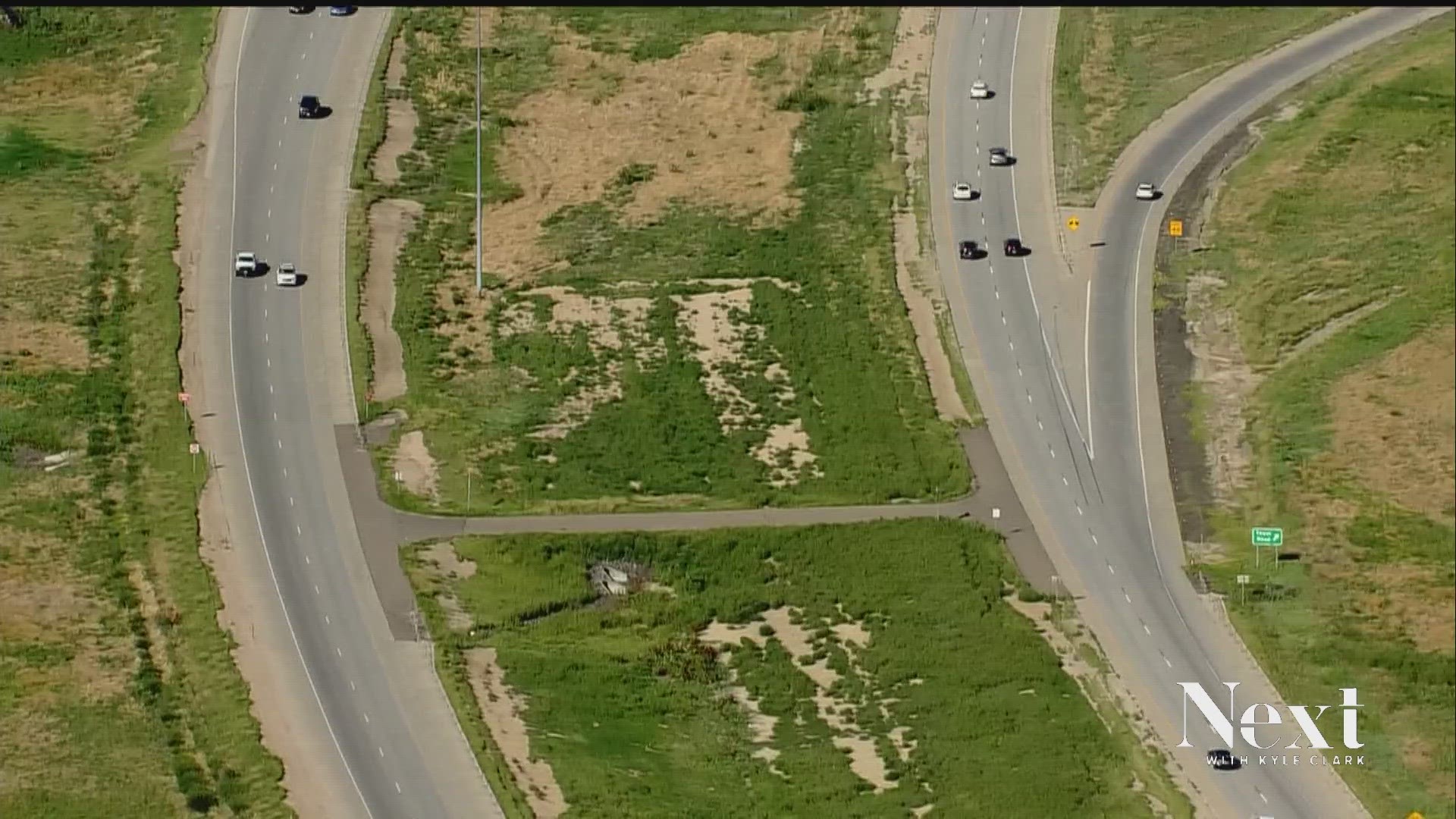DENVER — The road built to get people to and from Denver International Airport is full of cars not going to the airport.
One-in-four vehicles on Peña Boulevard are filled with people trying to get home or to work or to a hotel.
And as the airport works on a solution to a congested Peña Boulevard, it has already eliminated one option: building another free traffic lane.
“A general-purpose lane is induced demand, that is not conducive to what our regional goals are,” Lisa Nguyen, DIA’s principal transportation planner, said. “General purpose lanes have been screened out of our analysis.”
Nguyen has a unique role at DIA.
“I help people move in every mode of transportation outside of the actual airplanes at the airport,” Nguyen said.
She is leading the public engagement about what will happen to Peña Boulevard moving forward. There was a public meeting this past Saturday and two more scheduled for Aug. 23 and Aug. 30, showing the proposal options to community members living near Peña Boulevard.
Even though the airport makes loads of money, whatever happens with Peña Boulevard, the airport cannot pay for the entire project with airport funds.
A traffic study by DIA in 2016/2017 determined that 73% of traffic on Peña Boulevard were vehicles going to and from the airport, meaning one-in-four were non-airport-related vehicles.
“The other 27% of trips were local traffic, industrial traffic, hotel traffic. It was not headed to the airport,” Nguyen said.
And that means 27% of any cost needs to come from somewhere outside of DIA.
“It could be a federal grant, a state grant, could come potentially from municipal dollars, but it needs to come from non-airport revenue funds,” Nguyen said.
On Wednesday, the Denver Regional Council of Governments (DRCOG), will vote on several regional requests, including a $5 million request from DIA. That request represents 27% of the $18 million in funding to start the planning of the Peña Boulevard changes.
The Denver Bicycle Lobby has a petition trying to get the city, previously under Mayor Michael Hancock and now under Mayor Mike Johnston, to withdraw the $5 million request and instead ask for that money to design a Broadway bike lane extension from Speer Boulevard to Civic Center.
Peña Boulevard by the numbers
When the airport opened in 1995, 75,000 vehicles used Peña Boulevard daily.
That peaked in 2019 at 137,987 daily vehicles.
It dropped after COVID and has started to rise again with 128,690 daily vehicles counted in 2022.
DRCOG estimates that the residential population within five miles of Peña Boulevard will almost double between 2020 (127,000) and 2050 (250,000).
Jobs within five miles of Peña Boulevard were estimated by DRCOG at 238,000 in 2020, growing to 400,000 by 2050.
RTD ridership
The plans also rely on more travelers using RTD.
Statistics provided by DIA, based on information from RTD, show plenty of existing capacity on the RTD A Line.
A Line daily ridership capacity in both directions: 98,496
2022 daily A Line ridership in both directions: 10,268
2022 daily bus ridership in both directions: 2,359
Peña Boulevard solution options (PAGE 12)
Since a free driving lane is not on the table as an option, DIA will consider six types of managed lanes:
- Express lane
- High-occupancy vehicle (HOV) lane
- Bus lane
- Peak period shoulder lane
- Dynamic pricing lane
- High-occupancy toll (HOT) lane
Those range from an express lane specifically for DIA traffic-only to lanes that can only be used based on the number of people in the vehicle, to bus-only lanes to toll lanes or any combination of those options.
“As far as the tolling element, we’re looking at it both as a non-tolling option, so essentially if it’s a really beefed-up managed lane that offers buses, carpooling, is that enough to sway the demand? If that’s not enough to sway it, what would happen if there was a tolling element added on to it,” Nguyen said. “Potentially the tolling could be turned on and off depending on the demand and period.”
It is also possible that DIA chooses to do none of those options.
"‘Do nothing,’ which is a little bit of a misnomer, it doesn’t mean we’re actually doing nothing to the road. It just means we aren’t adding a lane or the cross section. It could mean that we’re upgrading the crash barriers, improving lighting, improving signage on Peña Boulevard,” Nguyen said. “Our hope is that it isn’t a big traffic jam all times of day.”
SUGGESTED VIDEOS: Next with Kyle Clark

